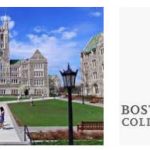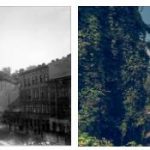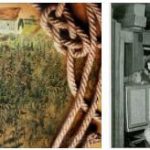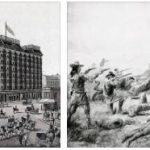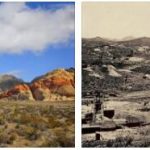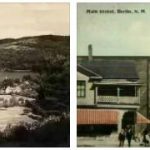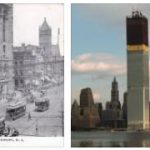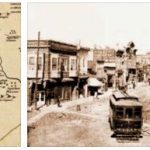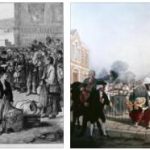Population: 6 587.536 thousand people (2011)
Area: 27336.0 sq. km
Massachusetts is located in New England in the northeastern United States. Before the appearance of Europeans in this place, local tribes of Massachusett Indians, Pennacook, Wampanoag and others lived here. It is from the people of Massachusett that the state takes its name, meaning “large mountainous place.”
The first European to visit this territory was the navigator from England, Bartholomew Gosnold, and it happened in 1602. The first European settlement here was formed thanks to the efforts of the passengers of the Mayflower who left England for religious reasons. This settlement was called “Plymouth Colony”. Another significant event is connected with these settlers, upon arrival in Plymouththey signed the so-called first American constitution, the Mayflower Agreement. The basis of this document was the idea of submission to the will of the majority. The Wampanoag Indians helped the new residents to settle in, the latter, in turn, thanked the Indians with a three-day feast in honor of the first harvest, which took place in October 1621. This is the story of the emergence of the famous holiday – Thanksgiving Day. In the 1620s, there were foundations in Massachusetts and other colonies – Gloucester (1623) and Nomkig (1626), later renamed the city of Salem. In the 30s of the 17th century, the first group of Puritans arrived here, led by the founder of Boston— John Winthrop. The year 1636 was marked for Massachusetts by the opening of Harvard University. A sad event in the history of Massachusetts was the “witch hunt” that began in 1692, which resulted in 156 charges.
In the middle of the 18th century, Massachusetts was the center of trade and shipbuilding in the British colonies, which led to unbearable tax oppression and resulted in the famous “Boston Massacre” that took place in 1770. And after 3 years there was a rebellion – the “Boston Tea Party”, which served as the impetus for the American War of Independence.
On February 6, 1788, Massachusetts became part of the United States, becoming the 6th state of the state.
Boston has a large number of state attractions: the remains of a granite rock in Plymouth, there is also a copy of the Mayflower ship, Cape Cod, Plymouth Plantation and others.
CAMBRIDGE
Population: 101.355 thousand people (2000)
Area: 18.5 sq. km
Founded: 1630
City status since: 1636
Time zone: UTC-5, summer UTC-4
Altitude: 12 m
Cambridge is located in Massachusetts, north of the city of Boston. The history of the city begins with the arrival of the first English settlers in 1630. Initially, the city was known as “Neve Town”, since 1638 it was renamed in honor of the University of Cambridge in England.
Cambridge is home to the well-known and prestigious in America Harvard University and the Massachusetts Institute of Technology, thanks to which the city is considered one of the intellectual centers of the United States. Harvard University, built in 1636, is one of the oldest educational institutions in America. But this is not the only building from the distant past. The historical landmark of the city is an old house on Battle Street, which during the siege of Boston was the headquarters for Washington. In 1843, the famous poet Longfellow lived there. A popular place in the city is Harvard Square, which is full of shops and entertainment venues. In the Fogg Art Museum, you can see unique paintings by great artists: Renoir, Manet and Degas.
One of the unique historical facts is that it was in Cambridge in 1831 that, according to all the canons, the first Mount Auburn cemetery in America was founded. This historical cemetery is known not only for the burial places of famous politicians and artists, but also for its picturesque surroundings: gardens, ponds and glades. Mount Auburn is officially a Cambridge National Historic Landmark. In the middle of the 19th century, the city was the center of literature, where famous US poets studied and lived: James Russell Lowell, Henry Wadsworth Longfellow and many others. The city is famous for the number of its squares, known for its wide variety of ethnic restaurants, churches, bars, boutiques. The attention of tourists is also attracted by two museums, which are located on the same territory as Harvard University. One of them houses a collection of US ethnography. The collection of “glass flowers” also deserves special attention, it contains 3,000 copies of 850 plant species. Museums periodically host presentations by prominent Harvard biologists.
The hallmark of the city is the Sackler Museum, which houses the best works of art from the Middle East, Ancient, India, Rome, Asia, Greece. The city’s parklands are predominantly located along the Charles River.
LOWELL
Population: 105.167 thousand people (2000)
Founded: 1653
City status since: 1836
Time zone: UTC
Altitude: 31 m
The American city of Lowell is part of the state of Massachusetts and belongs to the County of Middlesex. The city was founded in 1820 and was planned as a center for textile production. The so-called Boston Association, including Nathan Appleton and Patrick Tracy Jackson of the Boston Manufacturing Company, named the new factory town after their leader, Francis Cabot Lowell. As Lowell’s population increased, land from neighboring towns was acquired and Lowell developed into a full-fledged urban center. Many of those who built canals and factories here immigrated from Ireland, fleeing poverty and the potato town of the 1830s and 1840s. In 1824, the Church of St. Anna. By 1850, Lowell was the largest industrial center in the United States.
Throughout the 19th century, the city continued to prosper, attracting more and more migrant workers to its factories. Waves of immigrants included Catholic Germans, French Canadians, Portuguese, Swedish, Lithuanian, Polish, Greek and Eastern European Jews. They arrived in Lowell to work and settled in ethnic neighborhoods. The factory town’s manufacturing base declined after many companies moved south in the 1920s. The city fell into hard times, and was even called a “depressed industrial wilderness” by one magazine in 1931. At that time, of the major textile corporations, only three remained active. A few years later, the factories were rebuilt, producing parachutes and other military necessities for World War II. However, this economic recovery was short-lived. In the 1970s, Lowell became part of the Massachusetts Miracle. New immigrants began to arrive in the city, mostly from Cambodia. The city began to recover, but this time focused more on culture rather than production. The factory district along the river has been partially restored and is part of the Lowell National Historic Park, established in the late 1970s.
Among many tourist attractions, the city currently has 39 sites on the National Register of Historic Places, including many National Historic Park buildings. One of the interesting places is Lowell-Dracut-Thingsboro Forest. There are cross-country skiing trails, and you can also just ride a bike. Another attraction is the University of Massachusetts. There is also a “little Cambodia” in the city (in 2010, the city made efforts to create this tourist destination). Also, travelers will be interested in visiting the city gallery, the American Textile Museum of History and the Whistler House Museum of Art.
Lowell, Massachusetts
Lowell, Massachusetts, is a city with a rich history deeply connected to the rise of the American Industrial Revolution. From its origins as a textile manufacturing powerhouse to its cultural and economic evolution, Lowell’s story reflects the broader transformations of the 19th and 20th centuries. Additionally, the city’s climate, typical of the northeastern United States, influences its seasonal experiences and outdoor activities.
Founded in the early 19th century, Lowell’s history is closely tied to the vision of Francis Cabot Lowell and his partners. They sought to create a planned industrial community that would integrate all stages of textile production under one roof, marking a departure from the traditional “putting-out” system. The construction of the Merrimack Manufacturing Company in 1823 marked the beginning of Lowell’s transformation into a major industrial center.
Lowell’s textile mills attracted a significant labor force, primarily young women from rural New England farms. These “mill girls” played a crucial role in the city’s early industrial success. The Boott Cotton Mills Museum and the Lowell National Historical Park provide insights into this industrial past, showcasing the preserved mill buildings, worker housing, and machinery.
As the textile industry flourished, Lowell became a hub of innovation and industrialization. The city’s canal system, designed to harness the waterpower of the Merrimack River, facilitated the operation of numerous mills. By the mid-19th century, Lowell had earned the nickname the “City of Spindles” due to its extensive textile production.
Lowell’s history also intersects with the labor movement, as workers began to advocate for better working conditions and fair wages. The city’s role in shaping early labor unions and its connection to social reform movements are documented in the city’s historical sites and museums.
The decline of the textile industry in the mid-20th century posed economic challenges for Lowell. However, the city underwent revitalization efforts in the late 20th century, focusing on preserving its historic assets and diversifying its economy. The Lowell National Historical Park, established in 1978, encompasses key industrial sites and serves as a catalyst for the city’s cultural and economic rejuvenation.
According to Printerhall, Lowell’s climate is characterized by four distinct seasons, influenced by its location in the northeastern United States. Summers are warm, with average high temperatures ranging from the mid-70s to low 80s Fahrenheit (24-29°C). Winters are cold, with average high temperatures in the 30s and 40s Fahrenheit (-1 to 7°C). The city experiences moderate precipitation throughout the year, with snowfall in the winter months.
The changing seasons contribute to the variety of outdoor activities enjoyed by Lowell residents. The city boasts several parks, including the Lowell-Dracut-Tyngsboro State Forest, offering opportunities for hiking, picnicking, and nature appreciation. The Merrimack River, flowing through the city, provides a scenic backdrop and recreational space for boating and fishing.
Lowell’s commitment to education is evident in institutions such as the University of Massachusetts Lowell and Middlesex Community College. These institutions contribute to the city’s intellectual and cultural vibrancy, fostering innovation and research.
Cultural events and festivals celebrate Lowell’s diverse heritage and artistic expression. The Lowell Folk Festival, one of the oldest and largest folk festivals in the United States, attracts visitors with its music, dance, and crafts. The city’s diverse culinary scene reflects its multicultural population, with a variety of restaurants offering international cuisine.
Lowell’s historic preservation efforts extend to its architecture, with well-preserved mill buildings and worker housing contributing to the character of the city. The Canalway Cultural District, encompassing the downtown area, showcases a mix of historic and contemporary elements, including galleries, theaters, and public art installations.
Lowell, Massachusetts, stands as a city with a storied history deeply rooted in the industrial heritage of the United States. From its role as a textile manufacturing powerhouse to its revitalization as a cultural and educational hub, Lowell exemplifies the resilience and adaptability of American cities. The city’s climate, marked by distinct seasons, adds to the diverse experiences enjoyed by its residents and visitors, making Lowell a compelling destination that seamlessly blends history, culture, and natural beauty.

